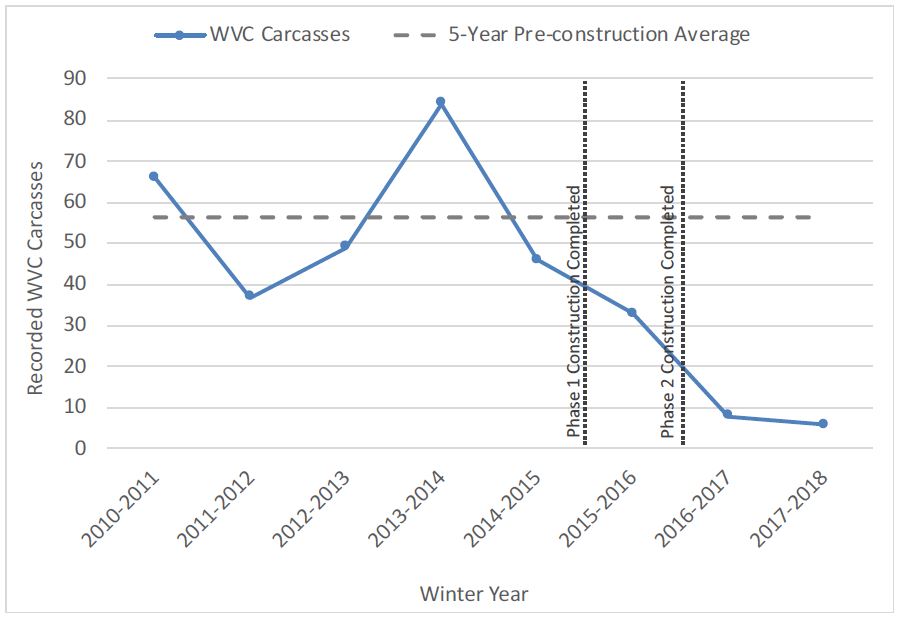CO State Hwy 9 Project – Year 3 Progress Report
After the completion of the first phase of the CO State Highway 9 Safety Project in December of 2015, an early monitoring report, released in 2017 by ECO-Resolutions of Golden, Colorado, confirmed that many different species of wildlife were preferentially using the structures with success rates ranging from 82%-98%, even before the entire project was completed. Participating in the study were researchers from CO Parks & Wildlife (CPW), CO Department of Transportation (CDOT), US Fish and Wildlife (USFWS), and ECO-Resolutions.

As the second phase of the project was completed in December of 2016, the comprehensive monitoring study continued to document wildlife use of the crossing structures and the project’s impact on local wildlife and traffic. The March, 2018 release of the Year 2 Progress Report included the first monitoring results for both completed phases of the project, including all 7 crossing structures. The report clearly showed the same success rates extended to Phase 2 of the Hwy 9 Safety Project.
This past April, 2019, the Year 3 Progress Report was completed by Eco-Resolutions (see download below), and the findings were as exciting as they were instructive. Using 62 motion-triggered cameras to record animal movements from December 2015 to April 2018, the report included these highlights:
- The successful movements of mule deer over or under the wildlife crossings has increased each winter (see Figure E-1 below), with a total of 45,759 successful movements over the study-period. While the success rate for mule deer only increased from 96% to 97% across the past two winters, overall success rates have increased by 17% overall.
- Again, In addition to mule deer, cameras have captured many species using the structures, including large and medium-sized animals like elk, white-tailed deer, pronghorn, black bear, bobcat, coyote, mountain lion, bighorn sheep, and moose (Figure 18 on page 28 of the report), as well as smaller animals such as red fox, badger, hare, skunk and raccoon (Figure 20 on page 31 of the report).
- Wildlife-vehicle collisions have decreased markedly, down 86% from the pre-construction average for the 2016-2017 winter, and down 89% from the pre-construction average for the 2017-2018 winter (see Figure E-2 below).
- The study also found that round bar wildlife guards were more successful in repelling mule deer from entering the fenced road corridor (90% repel rate) compared to flat bar wildlife guards (78% repel rate).

Figure E-1 from the Progress Report illustrates how many successful movements vs total movements by mule deer at crossing structures for each of the 3 winter seasons covered by the study.

Figure E-2 from the Progress Report shows mule deer and elk carcass counts recorded by Blue Valley Ranch and CO Parks & Wildlife compared to the 5-yr pre-construction average of 56.4 carcasses per year.
The study will continue to monitor the project through the upcoming 2019-2020 winter, and researchers will use the information they gather to help CDOT and CPW continue to manage the structures and the fencing. The final results should be very informative, not only for continued management of the Highway 9 Project, but also for future similar mitigation projects across the West.
CO State Hwy 9 Project – Year 3 Progress Report (PDF)
Tags: big game, elk, Habitat, Highway 9, landscapes, monitoring, moose, mule deer, overpass, wildlife
